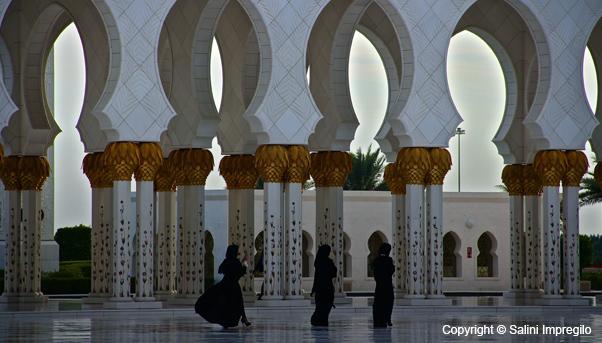It is a monument to Islam but it took people of all creeds to build it.
And the inclusiveness of the Sheikh Zayed Grand Mosque in Abu Dhabi, the third largest in the world, did not stop with its construction.
When it opened its doors in 2007, it welcomed visitors of every faith to come and admire its splendour.
«The mosque here is open for Muslims and non-Muslims, offering people a complimentary tour to share the experience of being inside a mosque,» declares a young guide in a documentary posted on the Internet by Gulf News, a Dubai media group.
Those who helped create this marvel of white marble near the city limits also testify to it.
«People have many misconceptions about Islam and mosques,» reads a 2015 newspaper interview with Kevin Dean, the British artist who designed the floral motifs of the mosque’s interior decor. «I have explained to them that this was an international project and it didn’t matter that I was from the UK and I am not Muslim».
For its scale and beauty, the mosque is an obligatory visit for royalty, heads of state and other dignitaries who come to Abu Dhabi, the capital of the United Arab Emirates (UAE).
Even the Internet search engine Google offers a virtual tour of the mosque, a feature that its Street View application awards only to the most significant landmarks around the world.
Conceived by the late Sheikh Zayed bin Sultan Al-Nahyan, the UAE’s first president and ruler of Abu Dhabi, the space at the mosque dedicated to prayer covers 52,000 square metres, more than twice the 25,000 square metres at the Vatican in Rome.
It accommodates some 40,000 worshippers: 10,000 in the internal areas and 30,000 in the external ones.
The mosque sits on raised ground 11 metres above sea level and 9.5 metres above street level so that it is clearly visible from all directions, according to an Abu Dhabi government website.

The Mosque of Marvels
The main dome is the largest mosque dome in the world: 85 metres high with a diameter of 32.8 metres.
Inside, the main prayer hall has the world’s largest handmade carpet. Commissioned from Iran, it covers 5,700 square metres. Above it hangs the world’s largest chandelier. It is 10 metres in diameter, 15 metres in height and weighing 12 tonnes.
There are more than 20 other chandeliers, gilded in carat gold.
With its four minarets, 82 domes and 1,400 columns, the mosque is a manifestation of Sheikh Zayed bin Sultan Al-Nahyan’s vision, but also of the skill and expertise of the thousands of designers, engineers, craftsmen and labourers who realised it.
There were dozens of international contractors, including Italy’s Impregilo, a predecessor of Salini Impregilo that helped oversee the construction.
Materials used to build it also came from all over the world. The white marble that gives the mosque its distinguishing feature by cladding the external walls and columns came from Italy and Macedonia.
Its expression of Islamic architecture is varied, as notes the official website of the mosque. The design of the minarets, for example, reflect Mamluk, Ottoman and Fatimid styles.
The decorative designs throughout the mosque were the domain of Moroccan artists steeped in the Islamic tradition of symmetry and repetition.
«When you come to the mosque you will see that all of the walls and ceiling are filled with details such as a kind of design that is related to the Moorish style of mosques», the young guide says in the documentary, which was posted in 2012.
The British artist Dean, who was hired to design the flower and vine décor that adorn the walls as well as the floor of the courtyard, said the importance of the project was overwhelming.
«The idea that it’s going to be here for many centuries to come, inshallah, has transformed my life», he says in the 2015 interview with The National, an Abu Dhabi newspaper.
As a central motif, he chose flowers, in particular irises, lilies, poppies, tulips, roses, jasmines and passifloras. These flowers, made of colorful mosaics, grace the courtyard with the swirls of their vines.
Crowned columns carry multi-colored marble ornamentation.
Pillars in the main hall are graced by flower vines with mother-of-pearl.
Other parts of the structure are decorated with carved and sand-blasted glass.

